10 Stock Picks With Peter Lynch Qualities
Peter Lynch, as manager of the Fidelity Magellan Fund (FMAGX) between 1977 and 1990, rode masterful stock picks to outsize gains.


Peter Lynch, as manager of the Fidelity Magellan Fund (FMAGX) between 1977 and 1990, rode masterful stock picks to outsize gains. FMAGX delivered average annual total returns of more than 29% to fund investors during his 13-year tenure, clobbering the stock market by over 13 percentage points. A $10,000 investment in Fidelity Magellan Fund starting when Lynch took the reins would have grown to nearly $280,000 by the time he departed.
Lynch attributed his success to investing principles he shared in One Up on Wall Street and Beating the Street. His overall strategy, based on a few core concepts, is surprisingly simple. A few of the most salient points:
- Invest in what you know. This is perhaps the most-quoted Peter Lynch saying. Lynch was wary of complex investment stories; he preferred stocks that were readily understandable. Some of Lynch's best ideas came from walking through grocery stores and talking with family and friends. He reasoned that, with consumer spending driving two-thirds of the U.S. economy, products and services desired by most consumers would be good investments, too.
- Invest in companies with strong foundations. Companies with certain traits make them easier to buy and hold for the long run. On the business side, look for competitive advantages, such as high barriers to entry or efficient scale. Lynch also preferred stocks that had solid cash balances and conservative debt-to-equity ratios. "It's hard to go backward if you have no debt," he once said.
- Focus on value. Peter Lynch liked value stocks that traded at cheap valuations based on their price-to-earnings (P/E) ratio. However, he also considered growth as part of the equation and thus wouldn't reject a high-P/E stock if it had a high growth rate, too. Lynch is famous for introducing price/earnings-to-growth (PEG), which factors growth into value. He also used a dividend-adjusted PEG ratio, since cash from dividends is part of the total-return equation. Moreover, Lynch coveted strong companies that were undervalued because they operated in out-of-favor industries.
With that in mind, here are 10 stock picks with Peter Lynch qualities. Some of these companies have one or more of the aforementioned traits, while some possess other qualities that the legendary investor prized.
Disclaimer
Data is as of Feb. 20.
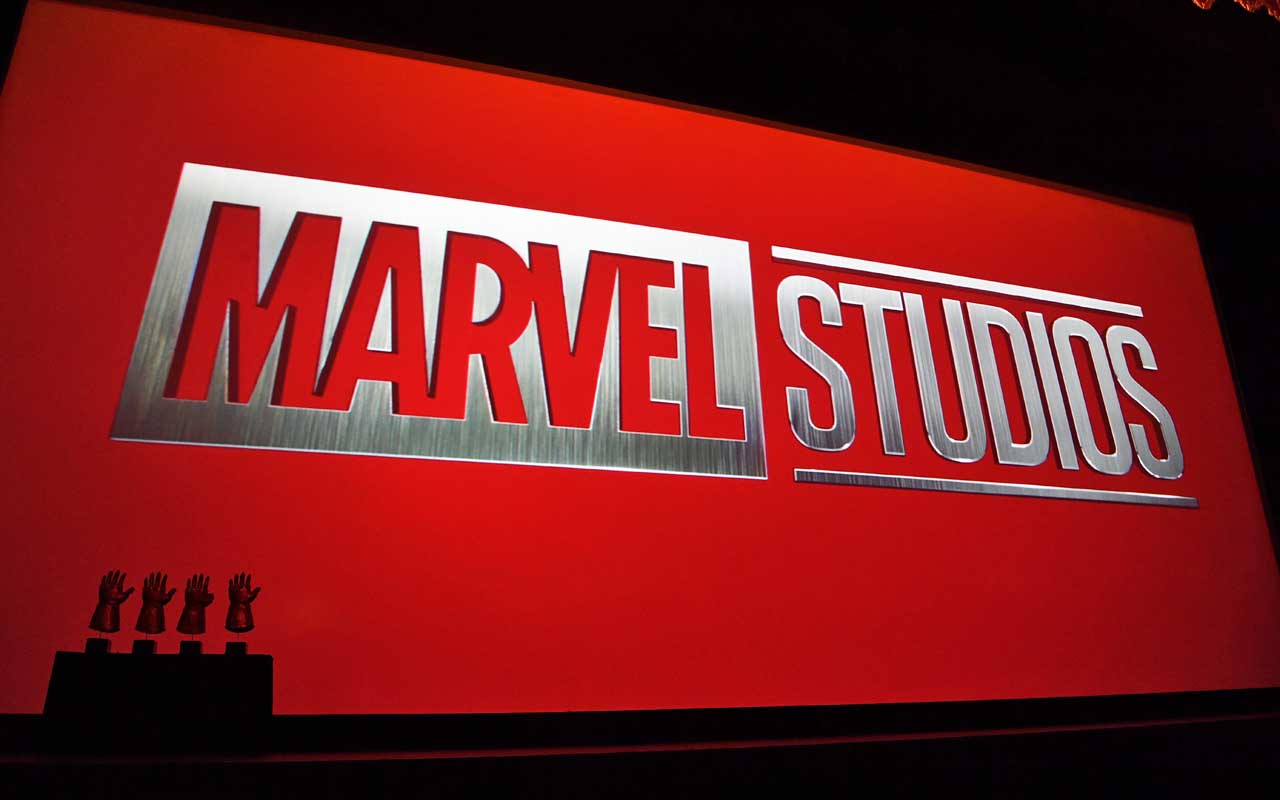
Walt Disney
- Market value: $253.4 billion
- Walt Disney (DIS, $140.37) is a great example of the "invest in what you know" principle. Disney ranked second in brand strength – which includes marketing investment, perceptions of the brand and financial measures representing the brand's success – in Brand Finance's Global 500 2020 report, behind only Ferrari.
Tens of millions of visitors come to Disney theme parks every year, but the company's greatest treasure might be its media library. Walt Disney owns the popular Star Wars and Marvel movie franchises, as well as ESPN, ABC and Disney Channel. When it purchased 20th Century Fox's assets, it picked up thousands of films, not to mention the FX station, a 73% stake in National Geographic Partners and 30% of Hulu, which, added to its own stake, gave it majority ownership.
As Disney continues to buy up media assets, it's consolidating power within the movie and TV arenas, giving it a powerful competitive advantage. Moreover, Disney now is monetizing its content library via the Disney+ streaming service, with a goal of acquiring 90 million Disney+ subscribers by year-end 2024. That adds recurring revenue, which Lynch also favored.
Disney is expanding into retail, too, via a partnership with Target (TGT). It opened 25 stores-inside-a-store in 2019 and is looking to open 40 more by October 2020.
Disney is hardly cheap, trading at 22.6 times analysts' estimates for next year's earnings. However, once you factor in growth expectations for next year as well as dividends, you get to a dividend-adjusted PEG of 1.4. Any stock picks with a PEG greater than 1 are technically considered overpriced, but Lynch writes in One Up on Wall Street: "In general, a P/E that's half the growth rate is very positive, and one that's twice the growth rate is very negative." Ultimately, Disney might be a better buy at a slightly cheaper multiple, but it still boasts a fantastic brand and an easy-to-understand business.
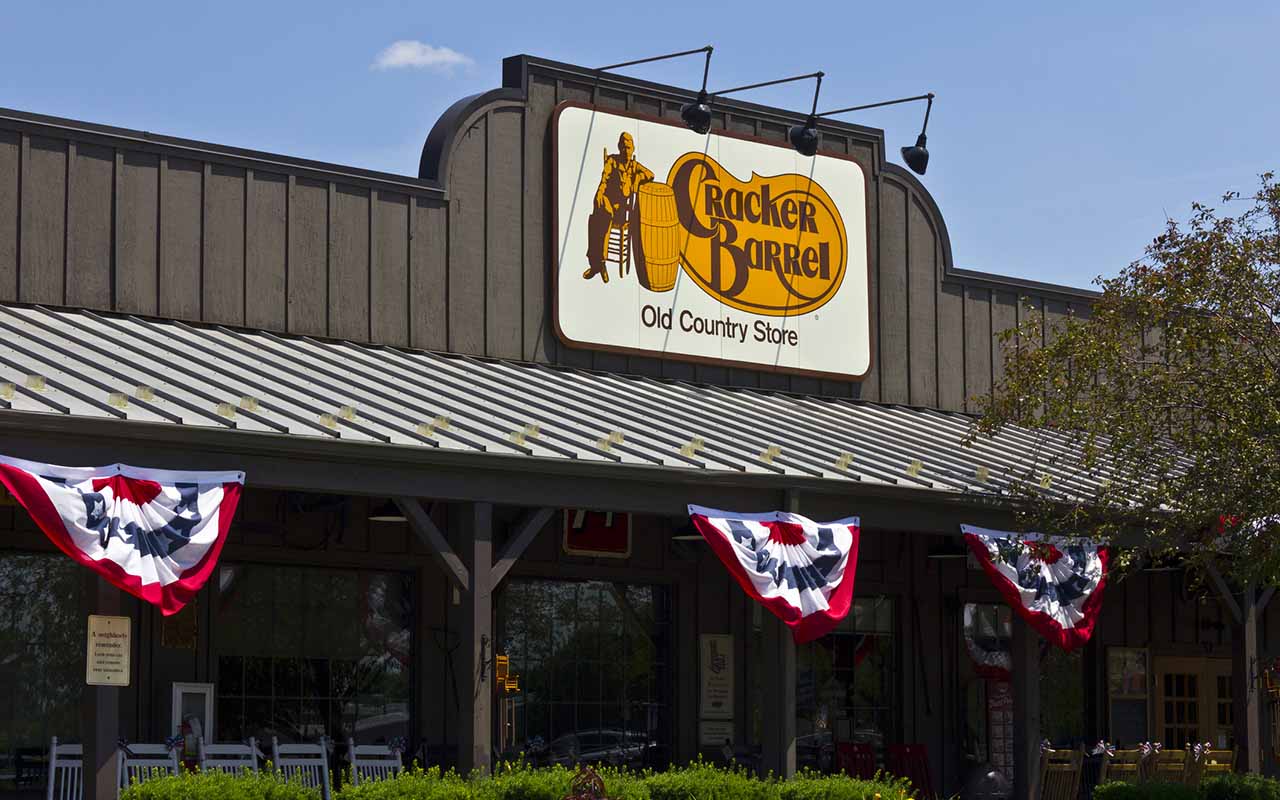
Cracker Barrel Old Country Store
- Market value: $4.0 billion
- Cracker Barrel Old Country Store (CBRL, $166.53) is another brand familiar to nearly every American, and another company that falls under Peter Lynch's penchant for easy-to-understand businesses. Cracker Barrel owns 660 restaurants across 45 states, offering budget-friendly homestyle meals and a country store-themed concept.
CBRL is expanding its foothold in the breakfast segment, which has represented nearly 60% of restaurant industry growth in recent years. It acquired Maple Street Biscuit Company, which operates 33 breakfast and lunch restaurants across seven states, for $36 million in October 2019. Cracker Barrel also will rebrand its seven Holler & Dash breakfast locations as Maple Street Biscuit restaurants.
Cracker Barrel also plans to reach millennial and Generation Z customers via its non-controlling interest in Punch Bowl Social, a new restaurant concept with 18 locations in 12 states, as of September 2019, and plans to add another 10 this year. Punch Bowl Social combines a made-from-scratch menu and craft beverages with a social gaming experience. It was named one of Fast Company's Top 50 Innovative Companies in 2019 and a Nation's Restaurant News Hot Concept in 2018.
CBRL shares trade at 16.6 times future earnings, which is less expensive than the market. Cracker Barrel's growth projections aren't torrid – analysts estimate 7% profit growth next year – but it does offer a 3.2% yield at current prices. That translates into a 1.6 dividend-adjusted PEG, which is a little on the expensive side, but not grossly overpriced.
One thing worth mentioning, however, is that Cracker Barrel does have high debt of $485 million versus just $43 million in cash – a no-no among Peter Lynch stock picks. Investors might want to consider waiting for a cheaper price, and for CBRL to pay off more debt.
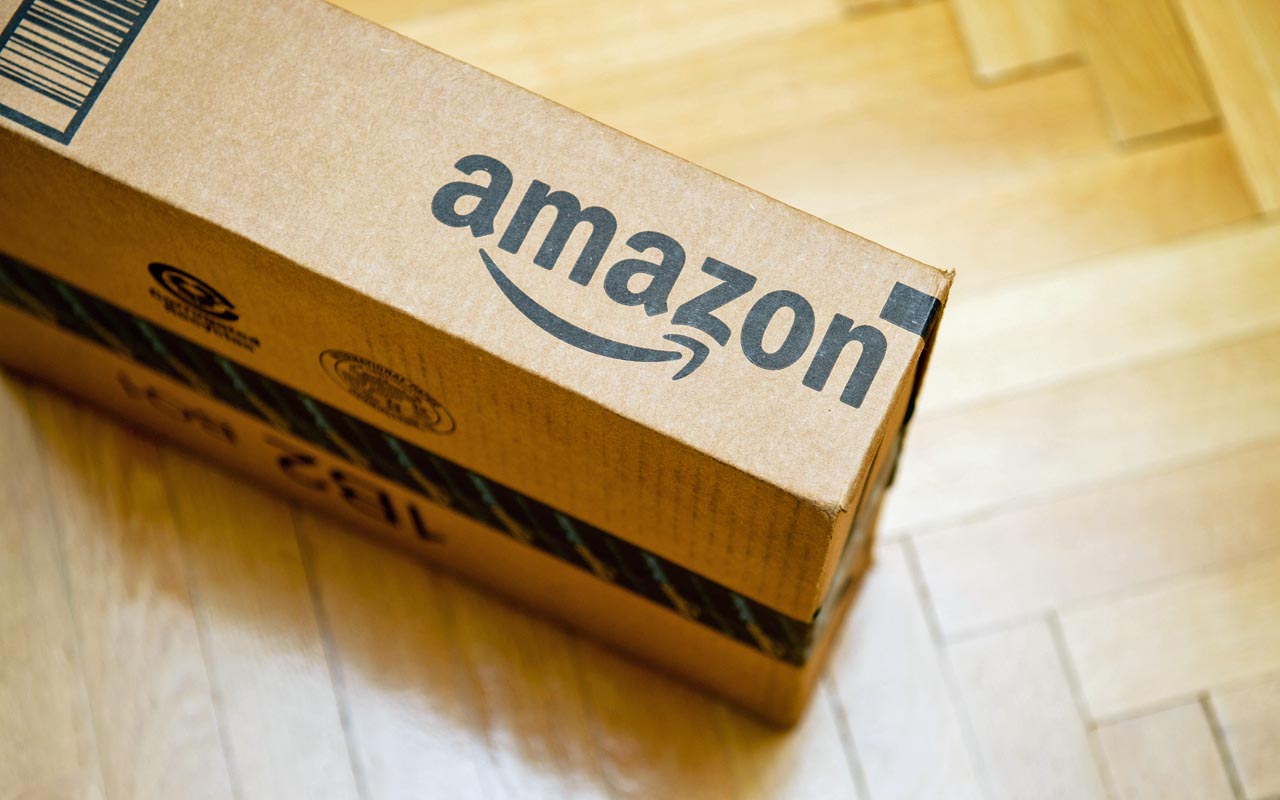
Amazon.com
- Market value: $1.1 trillion
- Amazon.com (AMZN, $1,777.17) has been famously expensive, by pure P/E, for most of its publicly traded life. Of course, that's never really interfered with the company's ludicrous growth ramp over its history, including a 1,700%-plus return over the past decade.
The problem is, P/E alone doesn't tell you much when you're dealing with this kind of growth. For instance, right now, AMZN shares trade at 52.7 times next year's earnings expectations – nearing triple the 19.4 investors are paying for the S&P 500 collectively. Factor in growth, however, and the stock looks more reasonable. Amazon boasts a PEG of just 1.3 once you consider analysts' projections for a nearly 40% jump in profits next year.
As for the business itself?
Amazon has defined, and redefined, the online shopping experience. Its Amazon Prime service, rather than simply being a delivery upsell, also offers music and video – which the company can deliver via its growing assortment of Echo smart speakers. It has an extensive network of more than 175 fulfillment centers worldwide, and it's expanding its delivery fleet to become even less reliant on other carriers. Amazon is leveraging that distribution strength to push into the grocery delivery business, positioning it to compete with the likes of Kroger (KR) and Walmart (WMT).
Not to mention, its Amazon Web Services is the leader among cloud providers, and gives the company a much-needed high-margin business that helps it squeeze out competitors in the lower-margin retail space.
AMZN even holds a spot among Berkshire Hathaway's (BRK.B) growing portfolio of Warren Buffett stocks. The Oracle of Omaha entered a position in Amazon during the first quarter of 2019 and added to his stake during the following quarter.
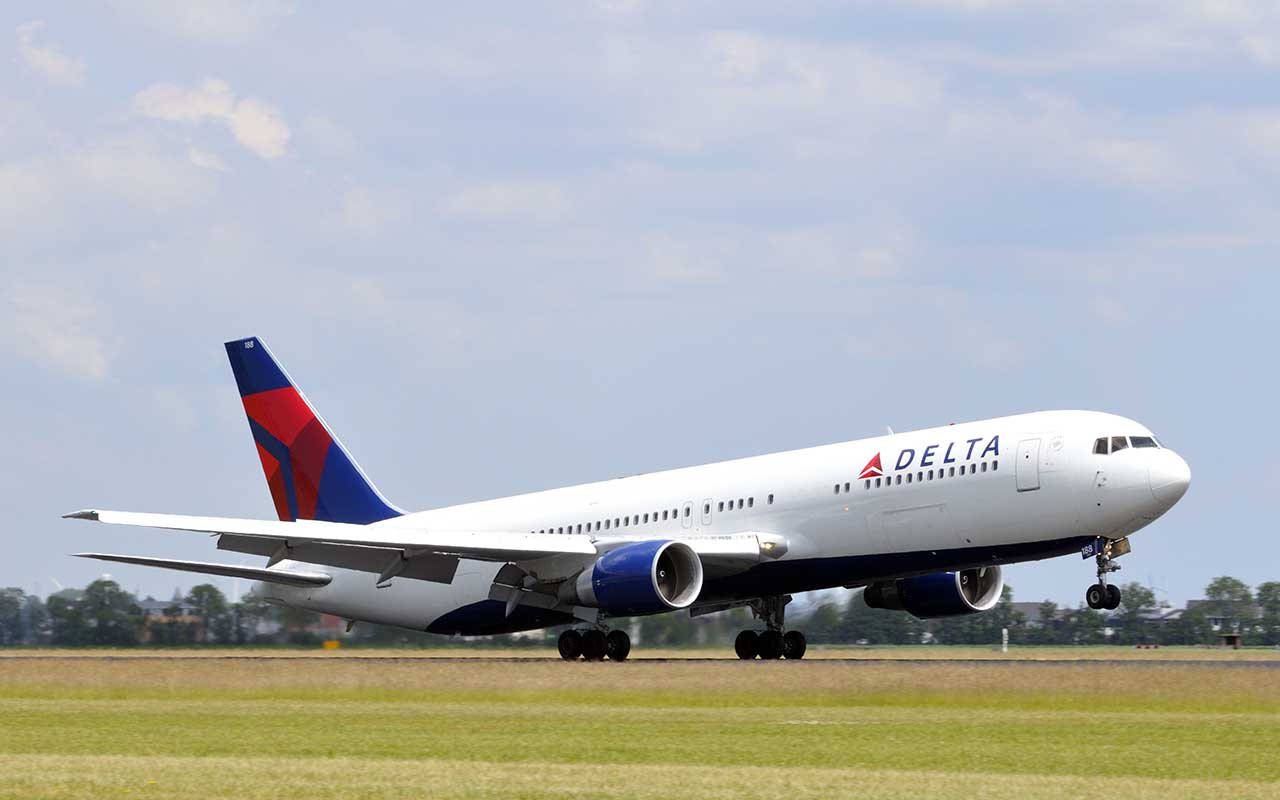
Delta Air Lines
- Market value: $37.4 billion
- Delta Air Lines (DAL, $58.38) is a firmly undervalued company.
This leading U.S. air carrier boasts a 17% of the domestic air market and a growing international business. It has ranked No. 1 in the Business Travel News annual airline survey eight years in a row. While many competing carriers have been forced to cancel flights due to issues with Boeing's (BA) Max 737 aircraft, Delta Air Lines doesn't have a single Max 737 in its fleet.
The company recently expanded its international presence by acquiring a 20% stake in Latin America's largest airline, LatAm Airlines Group (LTM). Delta Air Lines also has stakes in Korean Air, Canadian WestJet and Aeromexico, Mexico's top airline.
Delta also has promised investors that a recently renewed partnership with American Express (AXP) could reap up to $7 billion in high-margin revenues by 2023.
Profits in the airline space can be a crap shoot given fluctuating fuel costs, but Delta reported a 21.1% jump in profits for full-year 2019, on revenues that improved by nearly 6%. Those revenues, by the way, have been steadily on the rise for years.
DAL shares currently trade at a tiny 7.2 times forward-looking earnings estimates. That's slightly more than the 8% profit growth analysts are looking for next year. Factor in a market-beating 2.8% dividend yield, and you get an attractive dividend-adjusted PEG of 0.7.
Argus analyst John Staszark recently upgraded DAL from Hold to Buy and gave it a $76 price target, citing fleet upgrades, share buybacks, a strong balance sheet and cash flow among the stock's positive drivers. Just note the potential short-term turbulence for DAL (and most stock picks in the travel space, for that matter) depending on the length and severity of the coronavirus outbreak.

Royal Caribbean Cruises
- Market value: $23.0 billion
Speaking of the COVID-19 coronavirus …
Peter Lynch liked strong players in out-of-favor industries, and on that basis, he might like Royal Caribbean Cruises (RCL, $109.80) right now.
Royal Caribbean owns four global cruise ship brands (Royal Caribbean International, Celebrity Cruises, Azamara and Silversea Cruises) as well as stakes in a German cruise brand (TUI Cruises) and a Spanish brand (Pullmantur Cruceros). Its fleet of 63 ships make calls on all seven continents and Royal Caribbean Cruises has another 13 vessels on order.
RCL shares have plunged more than 17% year-to-date, however, largely because of COVID-19 fears. The world's largest coronavirus outbreak outside of China (so far) occurred onboard a Princess Cruises ship that sails out of Japan. Royal Caribbean, meanwhile, said the virus would eat into its 2020 earnings amid cruise cancellations and other disruptions.
Of course, this is the same Royal Caribbean that has beaten consensus analyst EPS estimates for 19 quarters in a row. Those are strong operations that bode well for whenever it emerges from its current issues – indeed, RCL might be a deep bargain lying in wait.
Royal Caribbean's stock, which already looked value-priced to start 2020, trades at an already low 9.1 times next year's earnings estimates, which include expectations for 16.3% year-over-year growth. RCL also pays a modest dividend that yields 2.8% currently. The result is a bargain-priced PEG of just 0.4 that Peter Lynch would call "very positive."
However, Royal Caribbean could become even cheaper in the short-term. Several analysts have downgraded the stock of late, including CFRA's Tuna Amobi, who slashed his rating from Buy to Sell. "With the geopolitical fallout of the outbreak seemingly intensifying in the past week, we now see a potentially significant downside to RCL's '20 financial targets," Amobi writes.

Fresenius Medical Care
- Market value: $19.6 billion
Peter Lynch liked stock picks that generate recurring revenues and provide essential services; one such company is Germany-based Fresenius Medical Care (FMS, $32.78), which provides vital dialysis services to patients worldwide through its roughly 4,000 clinics. Indeed, Fresenius is the world's leading provider of dialysis services and dialysis equipment.
Fresenius dealt with a difficult 2019 that saw net income drop from 1.98 euros per share to 1.20 euros. However, there were several moving parts including the closing of a $2 billion purchase of home dialysis devicemaker NxStage Medical and the implementation of IFRS 16 – an accounting standard that dictates how companies account for leases. That said, adjusted net income actually grew from 1.34 euros per share in 2018 to 1.37 in 2019, and the company anticipates returning to mid- to high-single-digit sales and EPS growth this year.
Indeed, the company's fourth quarter showed signs of FMS turning the quarter, with every geographical region contributing to overall organic revenue growth of 5%.
Analysts expect growth to rebound by 12.8%, while the stock trades at 15.6 those earnings estimates. Toss in a modest dividend of 1.6%, and you get a dividend-adjusted PEG of 1.1 – overvalued, but not by much. That payout, by the way, has improved for 22 consecutive years, putting Fresenius among the European Dividend Aristocrats. Management says it will propose a record 1.2-euro payout in May, building on already robust dividend growth that has averaged 10.7% annually over the past half-decade.

WestRock
- Market value: $10.5 billion
- WestRock (WRK, $40.55) is the No. 2 packaging company in the U.S., offering up solutions from folding cartons and corrugated containers to full-blown automated packaging systems.
Paper isn't exactly a high-growth business, but WestRock is capitalizing on current industry trends that include rising e-commerce-related demand for cardboard and a consumer preference for paper over plastic packaging.
It's also just beginning to realize operating efficiencies from its acquisition of Kapstone Paper and Packaging – a $4.9 billion deal with debt included. WRK expects to gain $200 million in annual cost synergies by 2021. The company had been growing prior to the acquisition, but the buyout helped Westrock deliver a 12%-plus boost to the top line in the fiscal year ended September 2019.
Analysts are understandably not predicting breakneck growth out of WRK – they see the company's profits rebounding 7% in fiscal 2021 after a pullback in the current fiscal year. But WestRock already trades at a cheap 11.5 times estimates and offers up a substantial 4.6% dividend, giving it a PEG of just less than 1.0 once the payout is factored in.
But be aware of the company's debt, which stood at nearly $11 billion at the end of December 2019, versus a mere $156 million in cash. While Westrock has a fairly straightforward business and a decent valuation, its financial foundation warrants further monitoring.

Reinsurance Group of America
- Market value: $9.6 billion
- Reinsurance Group of America (RGA, $153.20) is a leading provider of traditional life and health reinsurance with operations on literally every continent but Antarctica.
Insurance companies purchase reinsurance to protect themselves from excessive losses by transferring all or some of their risk to the reinsurer. Most of the company's competitors focus on property/casualty risk and have suffered big losses recently due to hurricane damage. Reinsurance Group of America focuses on life and health insurance and has no property damage risk.
It's admittedly an opaque business with intricacies that most people don't understand. But RGA is a solid, growing performer with relatively low net debt. The company's revenues have swelled from $10.9 billion in 2014 to $14.3 billion in 2019. Net income has varied – a common tendency among insurers – but it's broadly trending in the right direction (up).
While the stock has more than tripled over the past decade, it does tend to move in swings, and it's currently recovering from its latest dip. The upside? A decent valuation Peter Lynch could get behind. A forward P/E of 10.3 is already low, and combined with forward-looking growth estimates of 7.4%, as well as a 1.8% dividend yield, RGA shares trade at a decent 1.1 PEG ratio.
Don't sleep on that dividend, either. While the yield is modest, it has been growing like a weed. RGA's current payout of 70 cents per share is more than double the 33 cents it doled out in 2015, and that includes a 17% improvement announced last April.

Asbury Automotive Group
- Market value: $1.9 billion
Some of Peter Lynch's best picks came from strong companies in low-growth industries. That could describe Asbury Automotive Group (ABG, $99.74).
Asbury ranks as the nation's seventh-largest franchised car retailer, boasting 88 dealer locations and 107 franchises across several states, primarily in the Southeast. ABG, which sold more than 193,000 vehicles last year, offers an attractive brand mix of new and used vehicles – including luxury names such as Lexus, BMW, Mercedes-Benz, Infiniti and Acura – that generate above-average profit margins.
A key factor differentiating Asbury Automotive Group from competitors is its substantial parts-and-service operations, which represent 47% of gross profits. ABG operates 25 collision repair shops nationwide that offer best-in-class operating margins and recession-resistant revenues. The division's gross profits have grown by about 5.5% annually since 2003, and have improved every year since 2010. Finance & Insurance, another division, has seen gross profit per unit sold improve every year since 2012.
ABG shares went on a 68% tear in 2019, but the stock has cooled off by more than 10% since the start of 2020. The company still trades for a cheap 8.6 times earnings, which are expected to grow by a similar amount (8%) next year, resulting in a PEG of 1.1. (Note: Asbury doesn't offer a dividend.)
Auto sales can be a brutal business, especially in the current post-"peak auto" environment. Asbury's positioning in parts and sales, however, gives it an advantage that can help steer it through difficult times. But do mind the debt, here, which sits at roughly $1.9 billion versus just $1.8 million in cash.
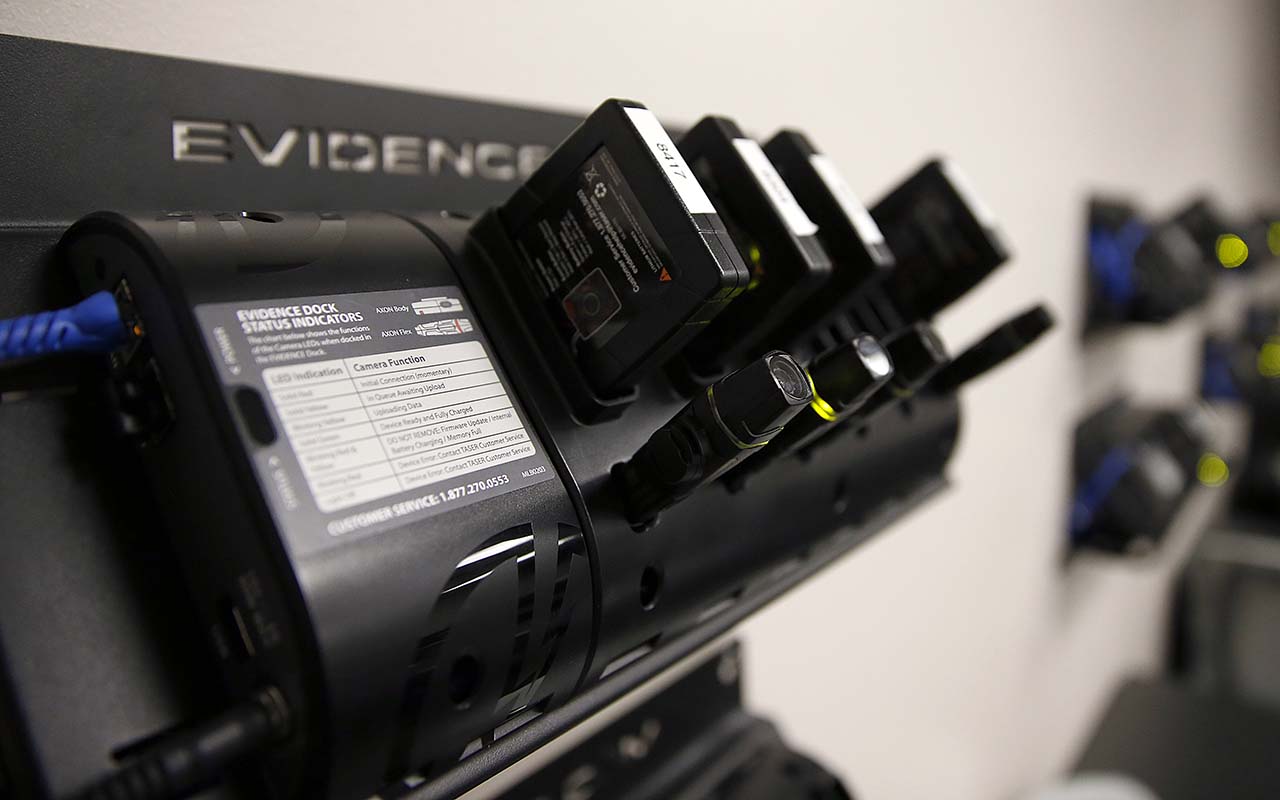
Axon Enterprise
- Market value: $5.1 billion
- Axon Enterprise (AAXN, $86.46) is hardly a household name, though it used to be. The company previously was called Taser International, after its namesake stun guns, but changed its moniker in 2017 to reflect its expansion into other products and services, such as body cameras.
Alongside the name change, Axon announced that it would provide free body cameras to every police officer in the country. But it wasn't charity. Those cameras included a free one-year subscription to Evidence.com, Axon's cloud-based storage platform for police cameras videos. And as those free subscriptions end, many are paying up given the high costs involved in moving video data from one cloud platform to another.
Axon's building on the platform, too. Its new AI tool Redaction Assistant increases its value proposition by eliminating hours of manual effort redacting police videos for privacy reasons.
Axon has plugged 47 major U.S. cities into its body camera solutions. It also added customers in Canada, Australia, England and Sweden. It also recently began providing its cloud service to municipal fire departments, EMS agencies and the U.S. Forest Service.
At the moment, Axon has a dominant position in its two primary fields (stun guns and body cameras), and it has a solid financial position Peter Lynch would love. AAXN has $312 million in cash and short-term investments versus a mere $11.6 million in debt.
But it's just too pricey right now. Axon's forward P/E of 67.5 is several times more expensive than the broader market. Yes, analysts expect big things out of the company – they're modeling a 26.7% profit boom next year on 16.4% growth in revenues – but even then, its PEG comes to a rich 2.5. If you're insistent on buying at a decent price, you'll need AAXN to cool off.
Get Kiplinger Today newsletter — free
Profit and prosper with the best of Kiplinger's advice on investing, taxes, retirement, personal finance and much more. Delivered daily. Enter your email in the box and click Sign Me Up.

Lisa currently serves as an equity research analyst for Singular Research covering small-cap healthcare, medical device and broadcast media stocks.
-
 6 Stunning Waterfront Homes for Sale Around the US
6 Stunning Waterfront Homes for Sale Around the USFrom private peninsulas to lakes, bayous and beyond, Kiplinger's "Listed" series brings you another selection of dream homes for sale on the waterfront.
By Charlotte Gorbold Published
-
 Six Reasons to Disinherit Someone and How to Do It
Six Reasons to Disinherit Someone and How to Do ItWhether you're navigating a second marriage, dealing with an estranged relative or leaving your assets to charity, there are reasons to disinherit someone. Here's how.
By Donna LeValley Published
-
 4 Turnaround Stocks to Consider – and 2 More to Keep an Eye On
4 Turnaround Stocks to Consider – and 2 More to Keep an Eye OnA turnaround stock is a struggling company with a strong makeover plan that can pay off for intrepid investors.
By Nellie S. Huang Published
-
 Stock Market Today: Stocks Waver as Big Tech Slumps on Spending Concerns
Stock Market Today: Stocks Waver as Big Tech Slumps on Spending ConcernsMarkets seesawed amid worries over massive costs for artificial intelligence and mixed economic news.
By Dan Burrows Published
-
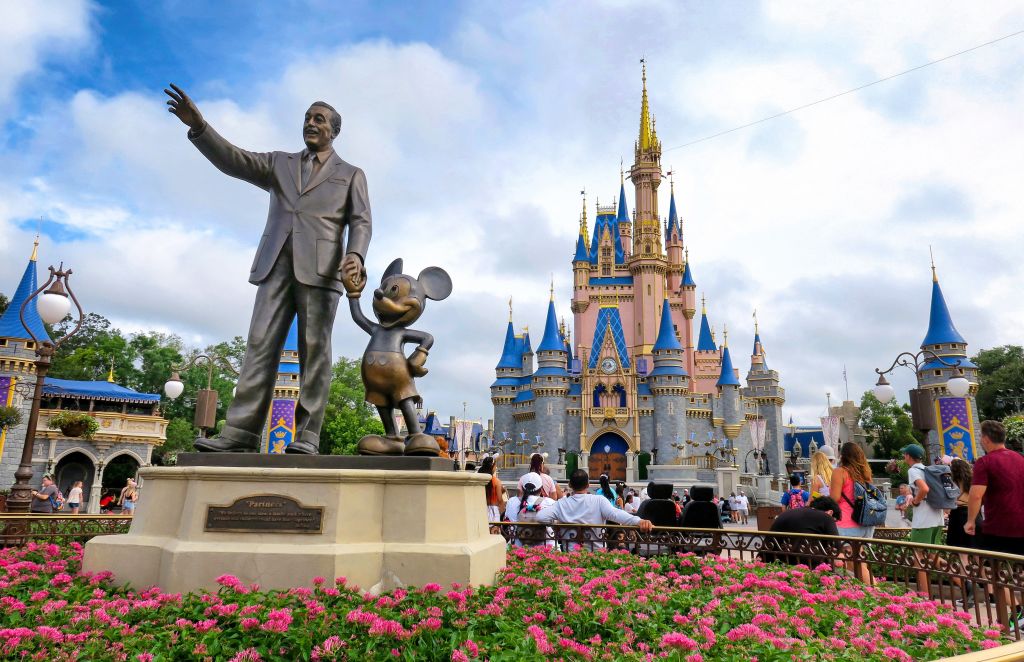 Is Disney Stock Still a Buy After Earnings?
Is Disney Stock Still a Buy After Earnings?Walt Disney stock is down Wednesday after the entertainment and media company beat fiscal 2025 first-quarter expectations. Here's what you need to know.
By Joey Solitro Published
-
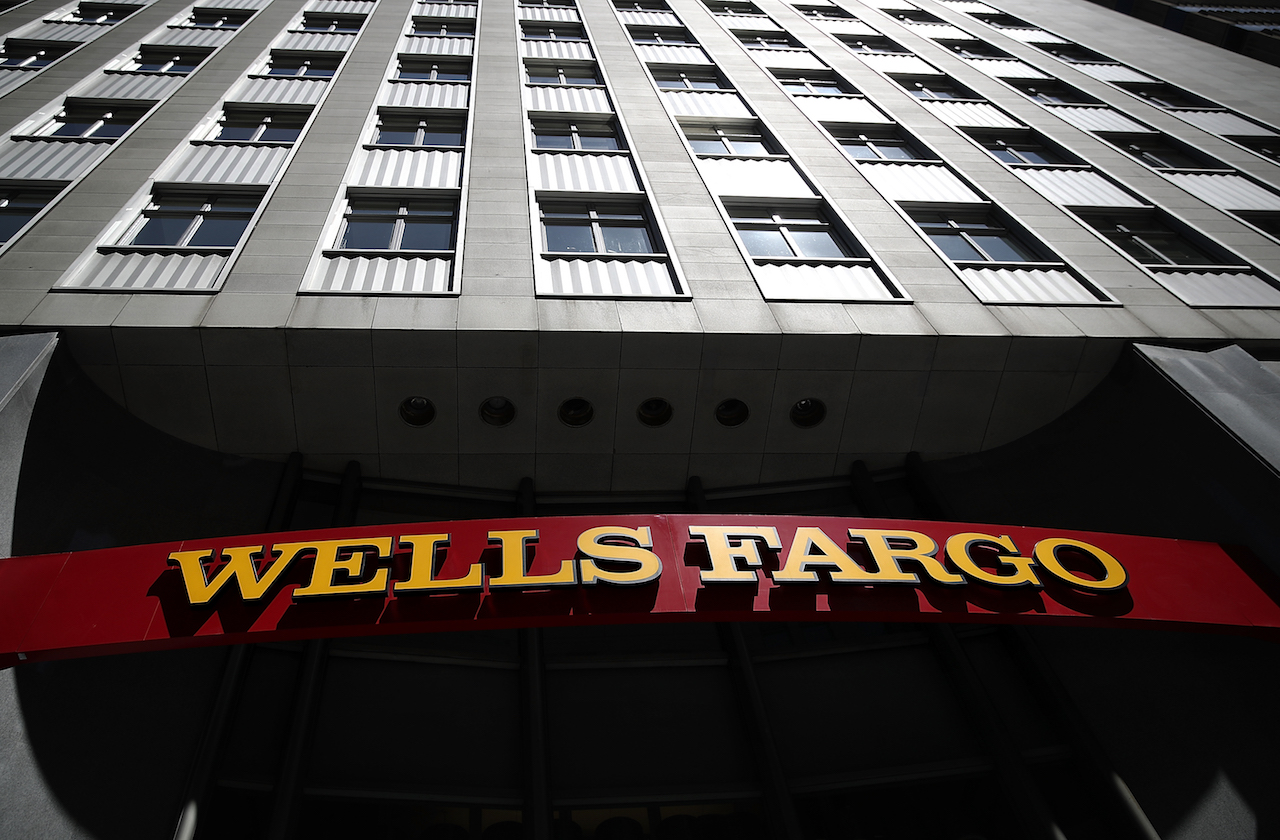 Why Wells Fargo's Revenue Miss Isn't Worrying Wall Street
Why Wells Fargo's Revenue Miss Isn't Worrying Wall StreetWells Fargo is one of the best S&P 500 stocks Wednesday even after the big bank's top-line miss. Here's what you need to know.
By Joey Solitro Published
-
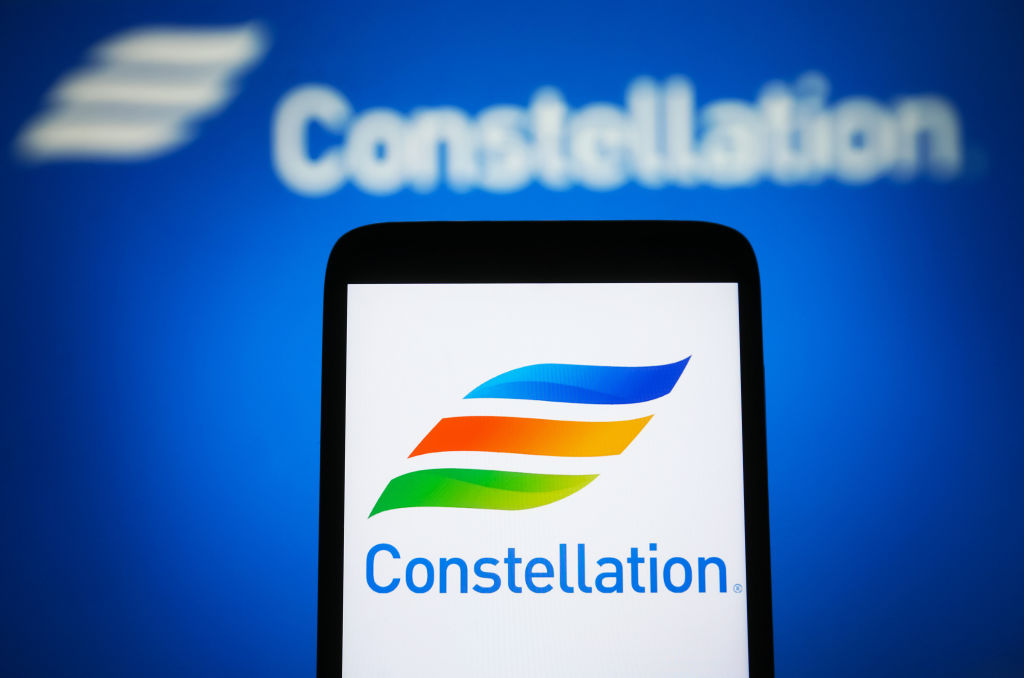 Constellation Energy Stock Soars on Its $26 Billion Buy. Here's Why Wall Street Likes the Deal
Constellation Energy Stock Soars on Its $26 Billion Buy. Here's Why Wall Street Likes the DealConstellation Energy is one of the best S&P 500 stocks Friday after the utility said it will buy Calpine in a cash-and-stock deal valued at $26 billion.
By Joey Solitro Published
-
 The Cheapest Places To Retire in the US
The Cheapest Places To Retire in the USWhen you're trying to balance a fixed income with an enjoyable retirement, cost of living is a crucial factor to consider.
By Stacy Rapacon Published
-
 Stock Market Today: Tech Stocks Soar Ahead of CES 2025
Stock Market Today: Tech Stocks Soar Ahead of CES 2025This week's annual technology event will give updates on AI, EVs and self-driving cars.
By Karee Venema Published
-
 Stock Market Today: Stocks Pause Near Highs Ahead of Jobs Friday
Stock Market Today: Stocks Pause Near Highs Ahead of Jobs FridayInvestors await a key data set with sentiment still broadly positive.
By David Dittman Published
